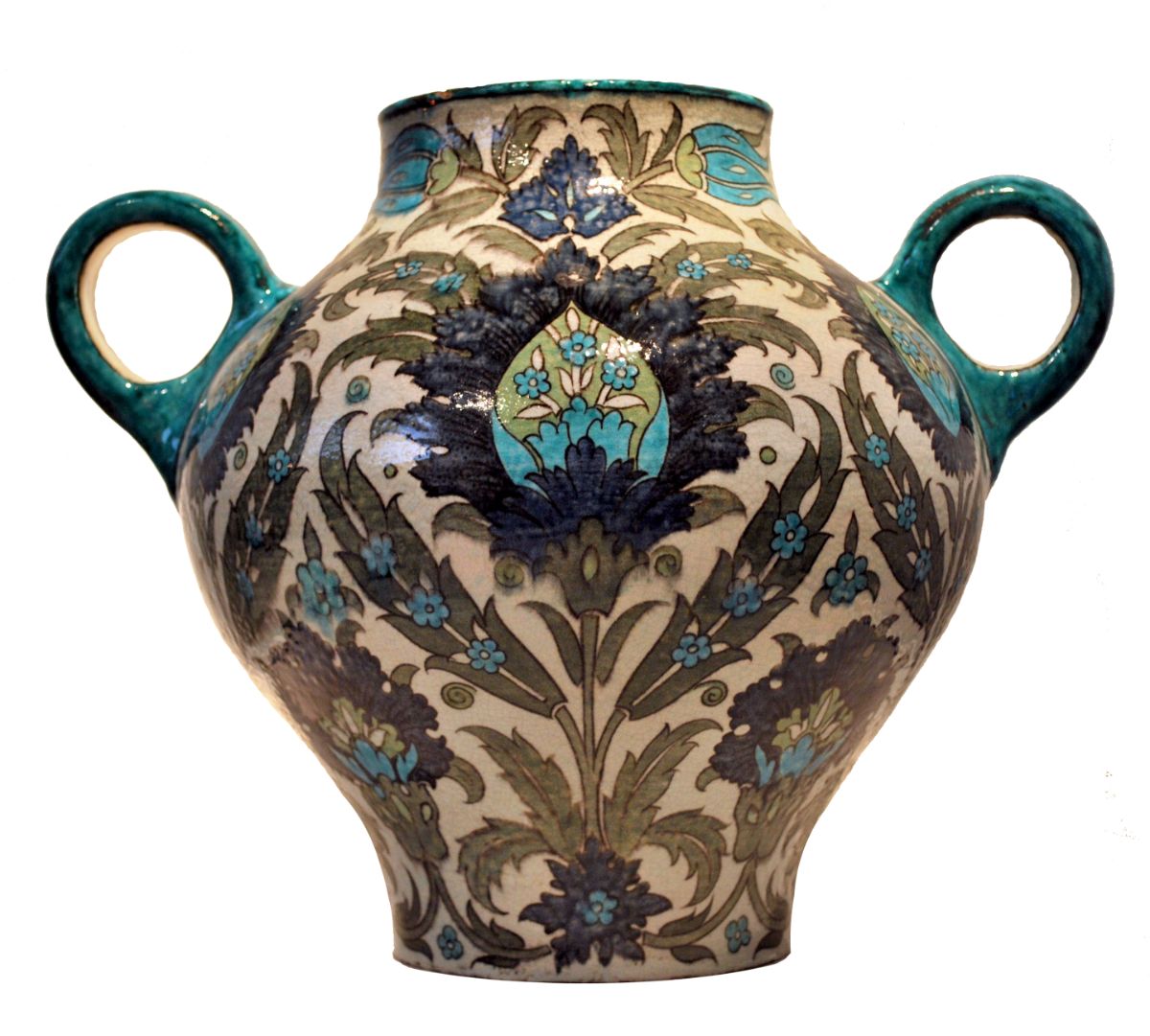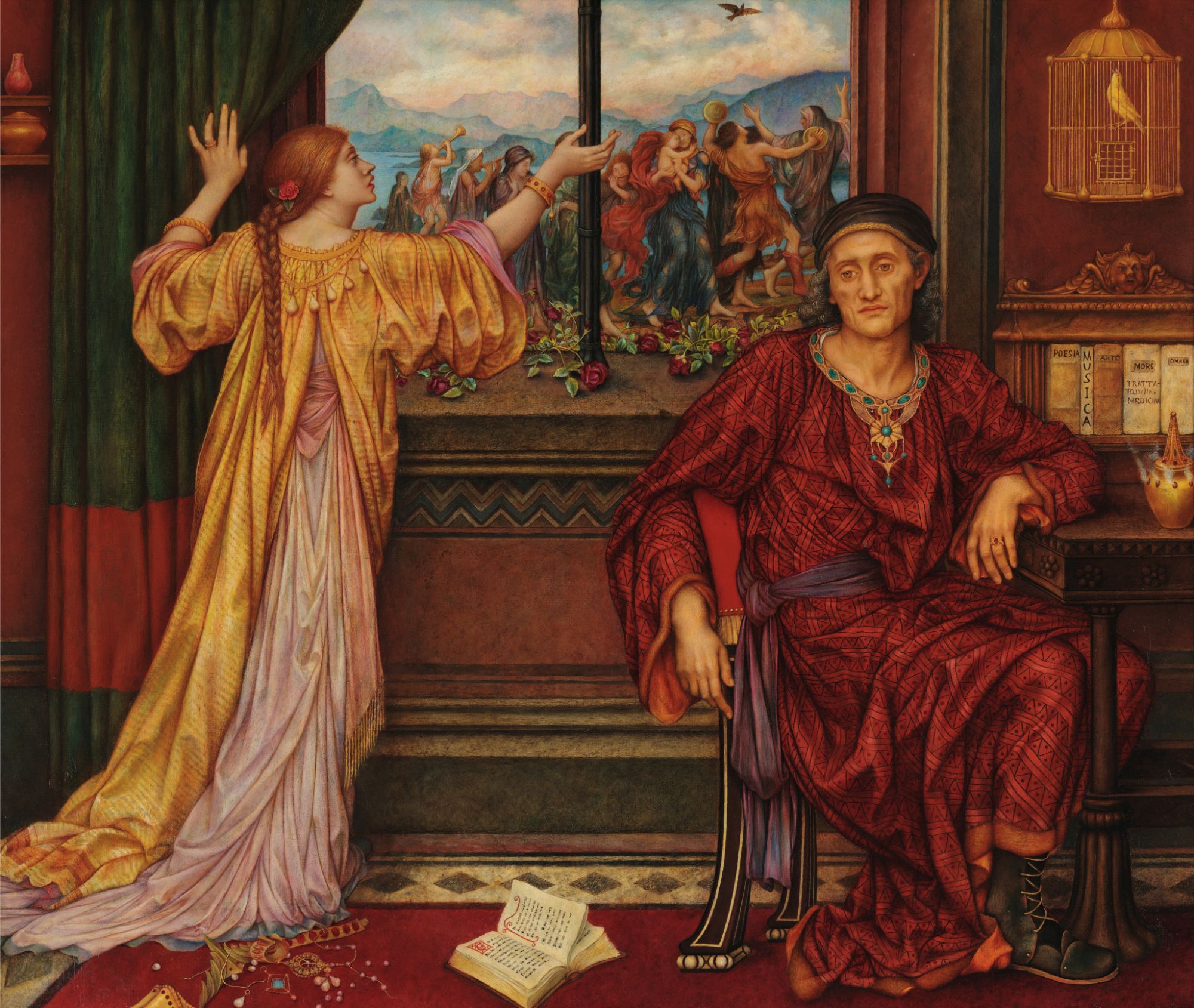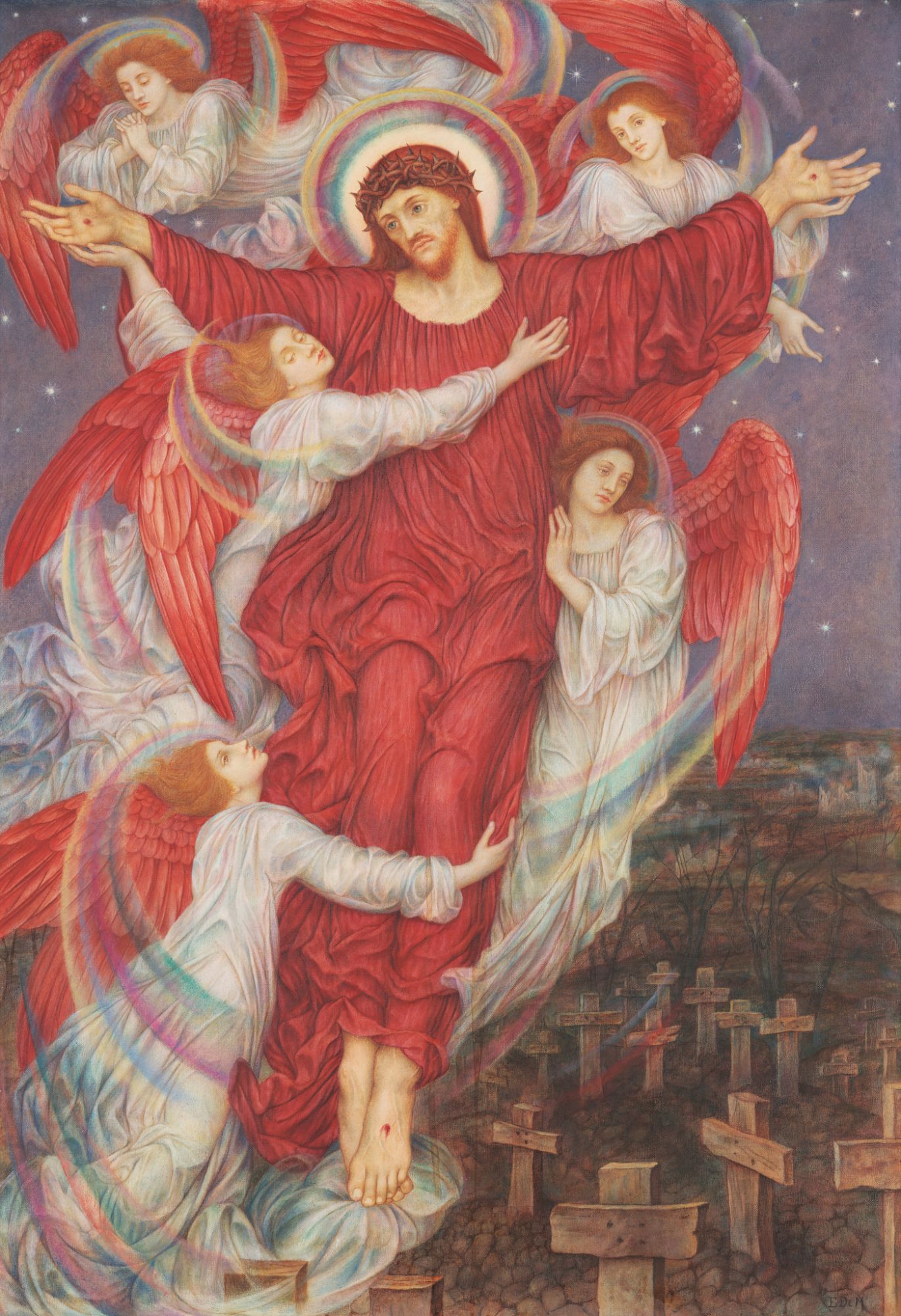About the Exhibition
From 16 September 2023, the Crocker Art Museum presents the first retrospective of Pre-Raphaelite painter Evelyn Pickering De Morgan (1855-1919) and her husband, stained glass and pottery designer William Frend De Morgan (1839-1917).
Married in 1887, their work spanned influential artistic circles of the era: Pre-Raphaelite, Arts and Crafts, and Aesthetic Movement. Their shared political and social views connected them with groups beyond the art world, including socialists, suffragists, and pacifists, making their impact on Victorian society broad and significant.
However, they’ve received limited recognition, with William’s craft focus and Evelyn’s gender contributing to this oversight. Evelyn, often labeled a disciple of Edward Burne-Jones, had little professional connection with him. This exhibition offers a comprehensive view of their cultural milieu, highlighting evolving attitudes toward Victorian marriage as a working partnership.
William De Morgan, born in 1839, hailed from a family of notable figures: his mother, Sophia, was an activist and spiritualist, while his father, Augustus, was a renowned mathematician. Despite his mathematical aptitude, William’s passion lay in the arts. Initially aspiring to be a painter, he joined the Royal Academy Schools in 1859, where he crossed paths with Pre-Raphaelite luminaries. Around 1863, he met William Morris, co-founder of Morris, Marshall, Faulkner & Co., known for their Gothic Revival church interiors and stained glass.
Inspired by Morris’s work, William De Morgan ventured into stained glass design, refining firing techniques. In 1869, he launched his pottery business, focusing on both production and design. His creations melded influences like Pre-Raphaelite medievalism, Italian Renaissance maiolica, and Middle Eastern lustreware, adorned with whimsical anthropomorphic creatures born from his imagination. Despite his inventive prowess, he struggled as a businessman, and the pottery remained financially unsustainable. In 1907, he made the tough decision to shutter the business, possibly with support from his wife, Evelyn, during their early marriage years.
His ‘Persian Vase’ (below) was created around the same time he met and married Evelyn Pickering, whilst he had premises in Merton Abbey (south West London), near his friend William Morris. It demonstrates his life-long interest in Middle Eastern decorative arts, ceramics, and design.

Evelyn Pickering De Morgan, born in 1855, grew up in an affluent family with legal and aristocratic ties. Despite family opposition, she was determined to pursue art and received crucial support from her uncle, Pre-Raphaelite painter John Roddam Spencer Stanhope. In 1873, she gained admission to the Slade School of Art, a rare opportunity for female artists. Here, her mature style began to take shape, influenced by intensive figure drawing and exposure to the early Italian Renaissance during continental travels. She meticulously studied and emulated works like Sandro Botticelli’s Primavera, evident in pieces like Flora (1894)
Evelyn’s exhibiting career commenced in 1876 at the Dudley Gallery, a haven for emerging artists. A significant turning point occurred in 1877 when she was one of only two female artists invited to showcase her work at the avant-garde Grosvenor Gallery, a testament to her burgeoning professional success.
By the turn of the century, William’s pottery business was in financial difficulty and it eventually closed in 1907. He became a best-selling author, having turned his hand to writing to satisfy his creative needs. This left Evelyn free to paint subjects close to her heart, rather than those which would be commercially successful. The Gilded Cage (below) was painted in about 1908. It shows a woman trapped in a marriage of convenience with a very unhappy husband. It is not biographical, but represents the De Morgans’ shared view that women were trapped in a patriarchal society.

The De Morgans Shared Passions
In 1883 William and Evelyn, who had for the last decade been travelling on parallel but separate tracks, came together. In addition to art, they were particularly committed to three causes — Victorian spiritualism, the early efforts of the women’s suffragist movement, and pacifism in response to the overwhelming devastation of the First World War. In The Worship of Mammon (1909), inspired by a story from the New Testament, the god of worldliness, a giant stone statue holding a bag of coins, is approached by a female figure who desperately clutches at his knee. The economic disparity of the ear distressed William and Evelyn.
The De Morgans lived well beyond the Victorianism and Pre-Raphaelitism of their youth. This included the last and particularly bloody expansion of the British Empire and the First World War. The Red Cross (below) depicts Christ being carried heavenward by a team of angels, while beneath a field of crosses litter the Belgian landscape — a direct reference to the extreme and extensive loss of lives brought about by the war.

The Crocker Art Museum is the state capital’s cultural hub, boasting a rich history and an impressive collection of art spanning centuries and continents. Established in 1885, it is one of the oldest art museums in the Western United States and has become an integral part of Sacramento’s cultural landscape. Coincidentally, the De Morgans were engaged in 1885, forming one of the most exciting artistic partnerships of the era. It seems fitting to host their artwork together in this historical setting.
The Crocker’s permanent collection features over 15,000 works of art, including European masterpieces, American art, Asian art, African and Oceanic art, and contemporary pieces. In particular, the collection of decorative arts and ceramics is particularly strong and it will be exciting to see William’s fabulous lustreware in this setting.
HISTORIC BUILDING
In 1868, Judge Edwin B. Crocker purchased the property and existing buildings on the corner of 3rd and O Streets. He then commissioned local architect Seth Babson (1830-1908) to renovate the home into a grander, Italianate mansion. In addition, Crocker asked Babson to design an elaborate gallery building adjacent to the mansion to display the family’s growing art collection.
Babson envisioned the home and gallery as an integrated complex, unique in design and built from the finest materials. The gallery building included a bowling alley, skating rink, and billiards room on the ground floor; a natural history museum and a library on the first floor; and gallery space on the second floor. Completed in 1872, the Crocker family mansion and art gallery are considered the masterpieces of Babson’s career. The family mansion went through several uses and reconstructions until a 1989 renovation restored the historic façade and created a modern gallery interior. The original buildings, now connected, as well as the since-demolished Herold Wing addition of 1969, were renamed the Crocker Art Museum in 1978. The gallery building is a California Historical Landmark and listed in the National Register of Historic Places.
TEEL FAMILY PAVILION
In 2000, the Crocker Art Museum initiated a search for an architect to lead their master planning process. Gwathmey Siegel & Associates Architects (GSAA) were selected for their design expertise and experience. GSAA oversaw the expansion of the museum, which more than tripled its size, resulting in the Teel Family Pavilion. This expansion, opened on October 10, 2010, was a significant milestone as it allowed for dedicated gallery spaces for all collecting areas, a first in the museum’s history. Additionally, the historic building’s entire first floor was transformed into the Museum’s Education Center, housing various studios, exhibition spaces, the Gerald Hansen Library, the Art Education Resource Room, and Tot Land. This expansion greatly improved the museum’s capacity to serve both Sacramento and the wider region, providing an enriched experience for visitors and strengthening its educational offerings.
Donate
We rely on your generous support to care for and display this wonderful collection


